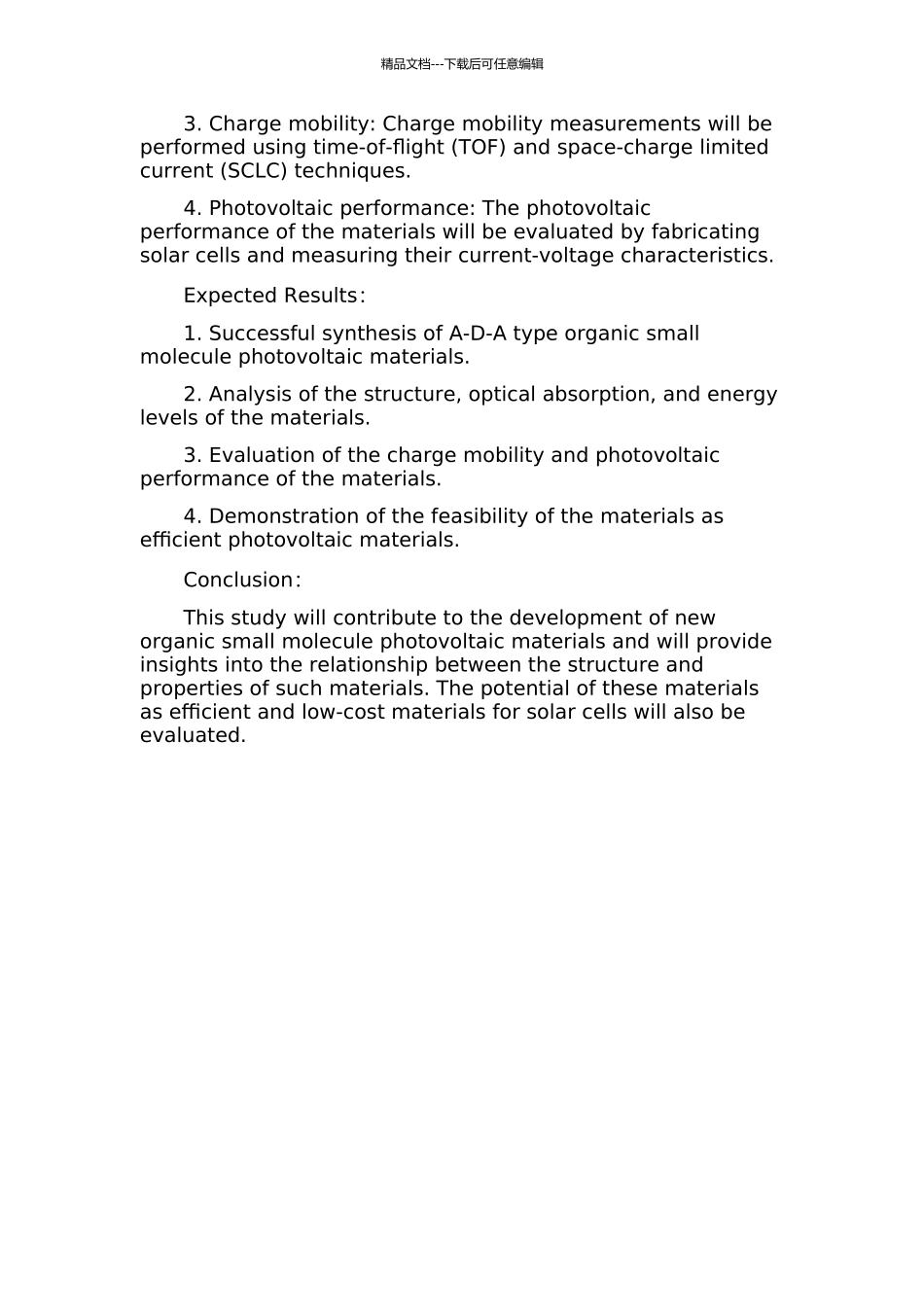精品文档---下载后可任意编辑A-D-A 型有机小分子光伏材料的制备及性质讨论的开题报告Title:Preparation and Properties of A-D-A Organic Small Molecule Photovoltaic MaterialsIntroduction:Organic photovoltaic materials have attracted much attention due to their low cost, lightweight, and flexibility. A-D-A type organic small molecule compounds have been widely studied due to their excellent charge transport properties and low aggregation tendency. In this study, we will synthesize A-D-A type organic small molecule photovoltaic materials and investigate their properties, including optical absorption, charge mobility, and photovoltaic performance.Objectives:1. To synthesize A-D-A type organic small molecule photovoltaic materials.2. To characterise the structure, optical absorption, and energy level of the materials.3. To investigate the charge mobility and photovoltaic performance of the materials.4. To evaluate the performance of the materials in a solar cell device.Methodology:1. Synthesis: The A-D-A type organic small molecule photovoltaic materials will be synthesised using a modified Stille coupling reaction. The final products will be purified using column chromatography.2. Characterisation: The structure of the materials will be confirmed by NMR, mass spectrometry, and elemental analysis. The optical absorption and energy levels will be measured using UV-vis spectroscopy and cyclic voltammetry, respectively.精品文档---下载后可任意编辑3. Charge mobility: Charge mobility measurements will be performed using time-of-flight (TOF) and space-charge limited current (SCLC) techniques.4. Photovoltaic performance: The photovoltaic performance of the materials will be evaluated by fabricating solar cells and measuring their current-voltage characteristics.Expected Results:1. Successful synthesis of A-D-A type organic small molecule photovoltaic materials.2. Analysis of the structure, optical absorption, and energy levels of the materials.3. Evaluation of the charge mobility and photovoltaic performance of the materials.4. Demonstration of the feasibility of the materials as efficient photovoltaic materials.Conclusion:This study will contribute to the development of new organic small molecule photovoltaic materials and will provide insights into the relationship between the structure and properties of such materials. The potential of these materials as efficient and low-cost materials for solar cells will also be evaluated.

